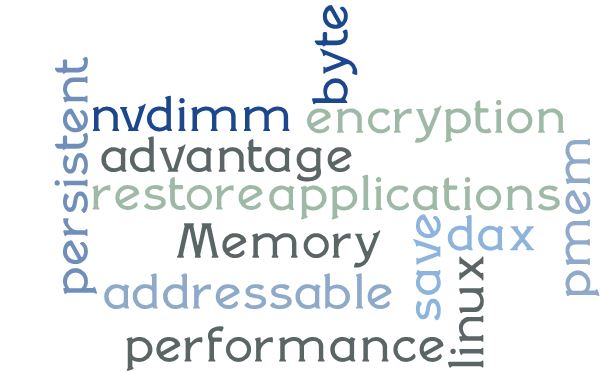Ever wonder why and where you would want to use Kubernetes? You’re not alone, that’s why the SNIA Cloud Storage Technologies Initiative is hosting a live webcast on May 2, 2019 “Kubernetes in the Cloud.”
Kubernetes (k8s) is an open-source system for automating the deployment, scaling, and management of containerized applications. Kubernetes promises simplified management of cloud workloads at scale, whether on-premises, hybrid, or in a public cloud infrastructure, allowing effortless movement of workloads from cloud to cloud. By some reckonings, it is being deployed at a rate several times faster than virtualization.
In this webcast, we’ll introduce Kubernetes and present use cases that make clear where and why you would want to use it in your IT environment. We’ll also focus on the enterprise requirements of orchestration and containerization, and specifically on storage aspects and best practices, discussing:
- What is Kubernetes? Why would you want to use it?
- How does Kubernetes help in a multi-cloud/private cloud environment?
- How does Kubernetes orchestrate and manage storage?
- Can Kubernetes use Docker?
- How do we provide persistence and data protection?
- Example use cases
We’re fortunate to have great experts for this session, Matt Baldwin, the founder and former CEO of Stackpoint Cloud and now with NetApp and Ingo Fuchs, Chief Technologist, Cloud and DevOps at NetApp.
I hope you will register today to join us on May 2nd. It’s live which means our expert presenters will be on-hand to answer your questions on the spot.
 You can catch up on videos of Summit talks, along with the slides presented, here.
During the webcast, we had many interesting questions. Now, as promised, Raghu provides the answers. Happy reading, and we hope to see you at one of our upcoming webcasts or events.
Q. Does NVDIMM-N encryption lower the performance levels that you presented? Read More
You can catch up on videos of Summit talks, along with the slides presented, here.
During the webcast, we had many interesting questions. Now, as promised, Raghu provides the answers. Happy reading, and we hope to see you at one of our upcoming webcasts or events.
Q. Does NVDIMM-N encryption lower the performance levels that you presented? Read More
 You can catch up on videos of Summit talks, along with the slides presented, here.
During the webcast, we had many interesting questions. Now, as promised, Raghu provides the answers. Happy reading, and we hope to see you at one of our upcoming webcasts or events.
Q. Does NVDIMM-N encryption lower the performance levels that you presented? Read More
You can catch up on videos of Summit talks, along with the slides presented, here.
During the webcast, we had many interesting questions. Now, as promised, Raghu provides the answers. Happy reading, and we hope to see you at one of our upcoming webcasts or events.
Q. Does NVDIMM-N encryption lower the performance levels that you presented? Read More
 /TCP Means for Networked Storage? where Sagi Grimberg, lead author of the NVMe/TCP specification, and J Metz, Board Member for SNIA, explained what NVMe/TCP is all about. If you haven’t seen the webcast yet, check it out
/TCP Means for Networked Storage? where Sagi Grimberg, lead author of the NVMe/TCP specification, and J Metz, Board Member for SNIA, explained what NVMe/TCP is all about. If you haven’t seen the webcast yet, check it out  Ever wonder why and where you would want to use Kubernetes? You’re not alone, that’s why the SNIA Cloud Storage Technologies Imitative is hosting a live webcast on May 2, 2019 “
Ever wonder why and where you would want to use Kubernetes? You’re not alone, that’s why the SNIA Cloud Storage Technologies Imitative is hosting a live webcast on May 2, 2019 “
 On February 13, 2019, the SNIA Cloud Storage Technologies Initiative (CSTI) presented a live webcast,
On February 13, 2019, the SNIA Cloud Storage Technologies Initiative (CSTI) presented a live webcast,  Mark Carlson (MC): SNIA does not just sit back and dream up work to do, but rather relies on industry input and requirements. A great example of how SNIA work is created is the 2018 launch of the Computational Storage Technical Work Group (TWG). It all started at the Flash Memory Summit industry event with a simple Birds-of-a-Feather on a thing called “computational storage”. Interest definitely was high – the room was packed – and the individuals assembled decided to use SNIA as the vehicle to do definition and standardization of this new concept.
Mark Carlson (MC): SNIA does not just sit back and dream up work to do, but rather relies on industry input and requirements. A great example of how SNIA work is created is the 2018 launch of the Computational Storage Technical Work Group (TWG). It all started at the Flash Memory Summit industry event with a simple Birds-of-a-Feather on a thing called “computational storage”. Interest definitely was high – the room was packed – and the individuals assembled decided to use SNIA as the vehicle to do definition and standardization of this new concept.